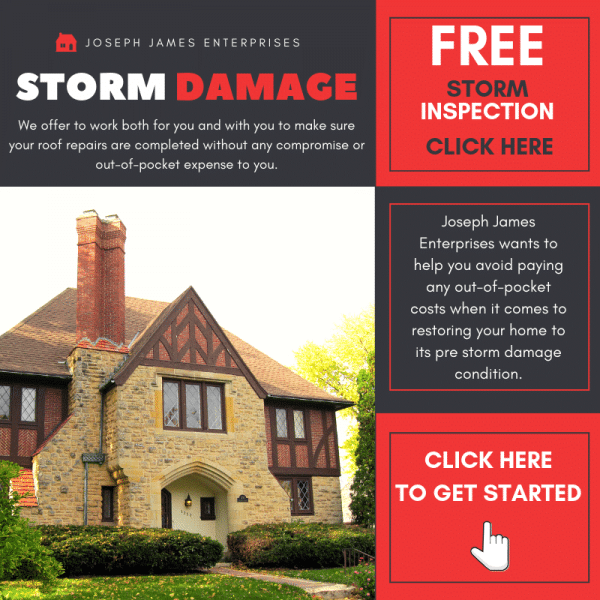Your roof is screaming. Hear it? It’s telling you it’s time for a New Roof Warrenville IL. Those loose shingles, that persistent leak, the growing water stains – they’re not just annoyances. They’re distress signals. In Warrenville IL, where weather swings from scorching to freezing, your roof (and siding) takes a beating. It’s your home’s helmet. But even the toughest helmet cracks. That’s when expert roofing contractors like Joseph-James Enterprises step in to install your next New Roof Warrenville IL.
The Silent Guardian
What’s shielding your family right now? Your roof. 24/7. Rain or shine. But time is relentless. In Warrenville IL, it’s merciless. Today, your roof’s fine. Tomorrow? A mess of problems. Don’t risk it. Act now.
Joseph-James Enterprises: Roofing Revolutionized
We’re not roofers. We’re home defenders. In Warrenville IL, where storms strike without warning, you need more than shingles. You need a fortress. That’s Joseph-James Enterprises. Why choose us? We don’t just cover homes. We fortify them when they need a quality New Roof Warrenville IL.
Roof Signals Decoded
Every roof speaks. Some whisper. Others scream. Can you understand them? We can. Our New Roof Warrenville IL experts don’t just inspect. They interpret. They comprehend. Patch job or full replacement? With Joseph-James Enterprises, you’ll know. No guessing. No fluff. Just facts.
Materials Matter
Remember that flimsy umbrella that failed you? A subpar roof is worse. Much worse. Our New Roof Warrenville IL materials aren’t just good. They’re exceptional. Imagine shingles that mock hail. Underlayment that defies leaks. Flashing that laughs at wind. With Joseph-James Enterprises, you’re not getting a roof. You’re getting a shield.

New Roof Warrenville IL
Style Meets Strength
Who says tough can’t be beautiful? Your New Roof Warrenville IL isn’t just protection. It’s a statement. It’s curb appeal amplified. Our selection doesn’t just guard. It dazzles. Why settle for bland when you can have brilliant? From timeless to trendy, we’ve got it all. Your dream roof? One call away.
Energy Wisdom: The Hidden Bonus
Here’s a secret: your New Roof Warrenville IL can fatten your wallet. How? By slashing energy costs. Our advanced systems don’t just repel rain. They retain cash. Picture a roof that defeats heat and conquers cold. It’s not a dream. It’s Joseph-James Enterprises reality. Lower bills. Higher comfort. Smaller footprint. That’s the Joseph-James Enterprises trifecta.
Installation Mastery
A New Roof Warrenville IL is only as good as its installers. The best materials mean nothing if poorly applied. Our teams? They’re not workers. They’re artists. Every nail, every shingle, every seam – perfection or bust. With Joseph-James Enterprises, your roof isn’t installed. It’s crafted.
New Roof Roadmap
First, we assess. Inside and out. Then, you choose. Materials, colors, styles – all premium, all you. We prep, protecting your property. Old roof? Gone. New roof? On its way. Our experts work fast, minimizing disruption. We clean up, leaving no trace. Final inspection ensures perfection. Lastly, we educate you on maintenance.
Simple. Efficient. Joseph-James Enterprises.
The Clock Ticks
Every second you wait, your old roof falters. Your home risks damage. Your bills climb. But here’s the good news: Joseph-James Enterprises is one call away. In Warrenville IL, your home isn’t just a house. It’s your castle. Your investment. Your legacy. Don’t let a failing roof threaten it all.
Seize Today, Secure Tomorrow
In roofing, delay is dangerous. That tiny leak? Growing. Those missing shingles? Inviting trouble. And each day, costs soar. So, what’s your move? Another night of roofing worries? Or the solid confidence of a Joseph-James Enterprises roof?
The choice is clear. But time’s running out.
Ready to crown your home right? To turn roofing nightmares into roofing triumphs? There’s only one number that matters in Warrenville IL: 630-882-9244. Don’t gamble with your home. Call Joseph-James Enterprises now. Let’s build a roof that’s tough as iron, beautiful as art, and reliable as sunrise. Your home will stand proud. Your family will sleep soundly. And your wallet? Too busy saving to complain.
Act now. Your perfect roof awaits.



